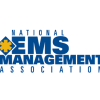Jim Collins, author of the best-selling Good to Great, talks about the importance of looking in the mirror and out the window. In his decades of research, he’s found that great leaders look in the mirror when things go wrong and accept the blame themselves. They also look out the window for other people to credit when results are good.
When others besides the leader receive credit for the organization’s success, innovation—rather than bureaucracy—flourishes. Is your organization’s leadership encouraging new ideas and the risk associated with trying something different, or are they sowing the seeds of bureaucracy, allowing a “blame game” culture to squelch fresh perspectives?
This month we’ll assess the trap of bureaucratic, non-value-added activities through the four dimensions of organizational agility. Bureaucracy can sneak up on an organization incrementally, often under the guise of the need to standardize, control or be “fair.” See how your agency measures up.
Awareness and alertness
Agile organizations are highly alert to bureaucracy, getting rid of the stupid stuff and encouraging innovation. “There’s no good reason—that’s just the way we do it here” is a phrase that describes processes in fragile EMS organizations. As you read this, you can probably think of three or four examples of non-value-added processes in your organization. If you are having trouble thinking of an example, one of my favorites is how EMS does scheduling and manages “call-offs.”
In many cases, a written request is made, then another individual checks the records to make sure there is sufficient leave available to be granted. Then it’s up to a supervisor to communicate that the leave is approved. Then someone else calls 10 to 12 people who don’t want to take the shift. Eventually someone is found to take the shift.
Let’s look at another example from outside of EMS. I recently had an outpatient EKG, and it quickly became apparent that their processes were very bureaucratic. After signing in, there was registration and insurance verification before the EKG could be taken. They demanded a copy of my insurance card despite my telling them I was paying cash.
Multiple stations were required to complete registration. I had to wait for the second registration person to finish another client’s paperwork. Then I was sent to outpatient cardiology, only to wait for the paperwork to be transmitted the 25 feet around the corner from registration. Once it arrived, there was an additional wait for a room to open up to take the EKG. Moving into the room, I waited for a technician to run the EKG. They wanted me to wait for the cardiologist to read the EKG before I left.
A typical EKG takes less than five minutes. When the entire process takes 60 minutes, 55 of those minutes are non-value-added, as are all the additional steps by the patient and staff.
Agile organizations identify, eliminate or simplify non-value-added steps. This mindset is often a breakthrough in thinking for many EMS groups. Currently, the accepted wisdom is that everything we do in EMS is value-added because it is “how we do it.” However, 95 percent of typical activity in any process is non-value-added. EMS can experience significant productivity gains and have happier customers by identifying and creatively chipping away at those non-value-added steps.
Would you wait 30 minutes for a hamburger at a fast-food restaurant? Of course not. Most well-run fast-food chains have already eliminated a significant portion of non-value-added steps from their food service processes. That’s why you get your meal in a few minutes.
Development of a performance-based culture
Your agency’s culture may seem innocuous, but bureaucratic cultures are kryptonite to agile organizations. And, unlike in the Superman comic strip, there is more to be done than simply removing the kryptonite in order to get more value.
Culture shapes the way the work gets done and how people think. The culture of a fragile organization reinforces bureaucracy and mediocrity. In contrast, an agile organization develops an environment in which everyone is empowered and expected to ask, Does this process create value?
Agile organizations are constantly looking for ways to manage and reduce the resources and costs associated with non-value-added activities. More important, they habitually innovate, adjust quickly to new business conditions and seize emerging opportunities before competitors do. Agile organizations perform efficiently today while continuing to explore new sources of value for tomorrow.












